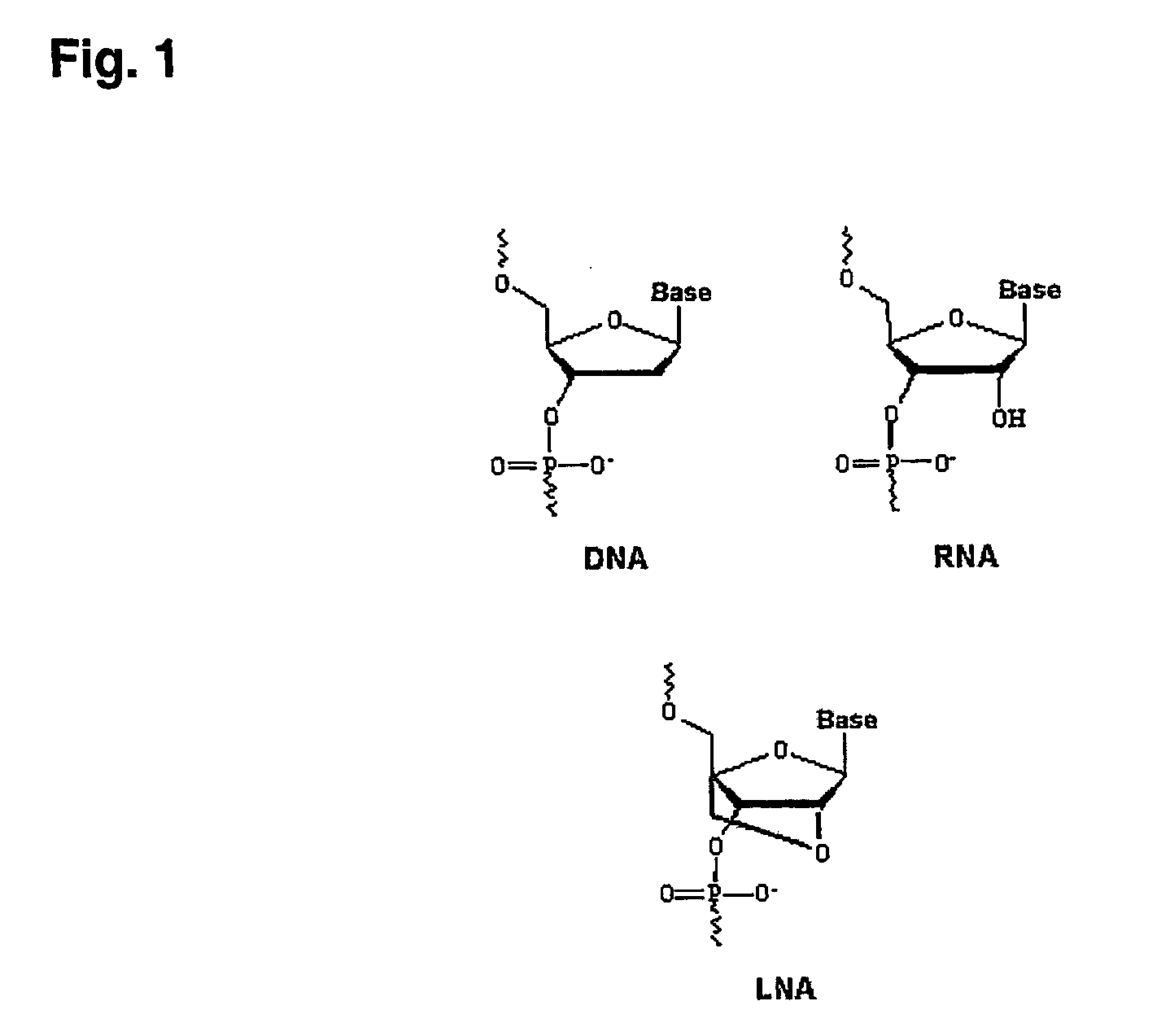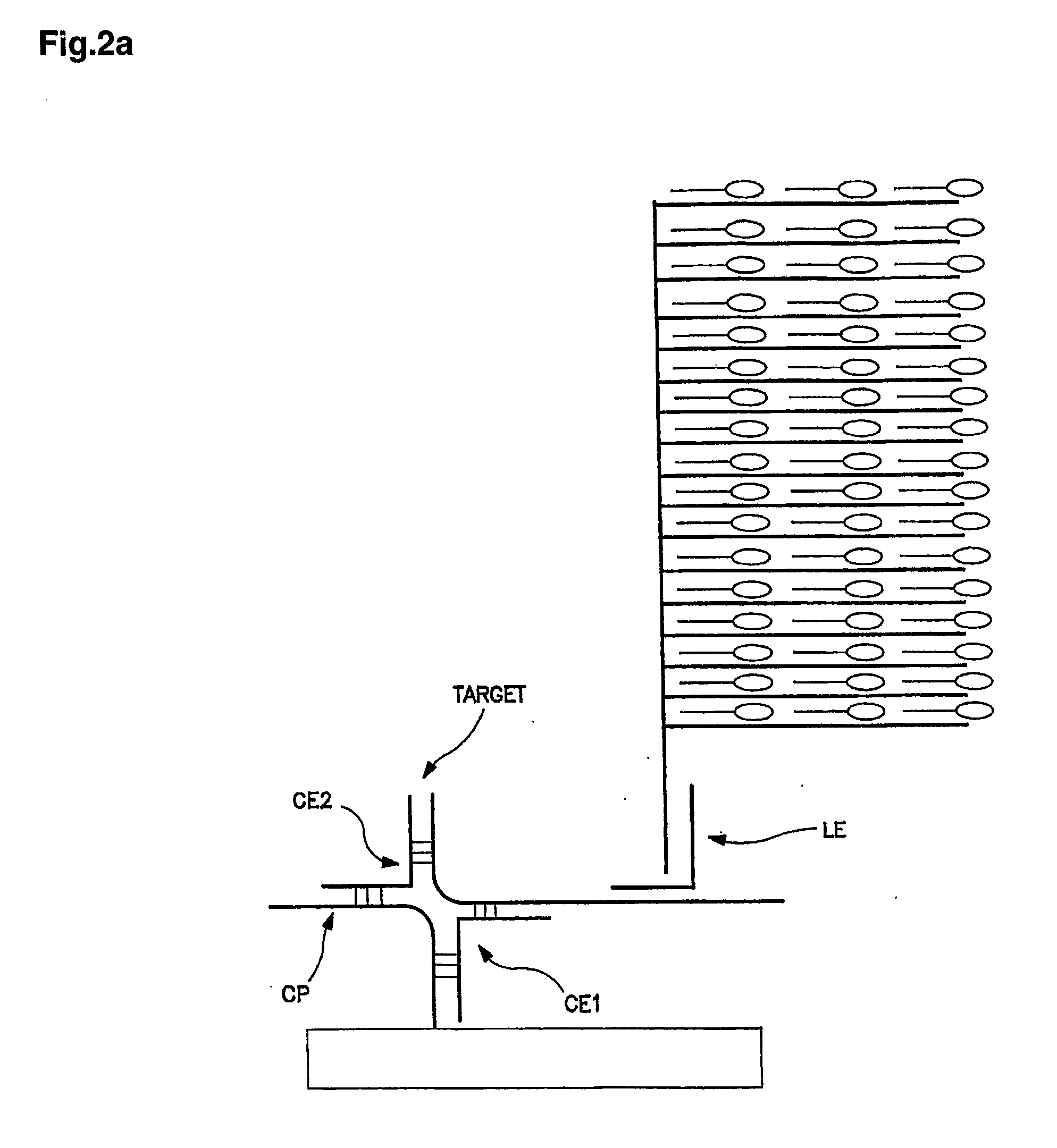Method and a kit for determination of a microbial count
a technology of microbial count and kit, which is applied in the field of methods and kits for determining microbial counts, can solve problems such as large differences, and achieve the effect of rapid results and reliable results
- Summary
- Abstract
- Description
- Claims
- Application Information
AI Technical Summary
Benefits of technology
Problems solved by technology
Method used
Image
Examples
examples
Immobilisation of Capture Probes:
[0157] Anthraquinone LNA capture probes are dissolved in 0.2 M NaCl equivalent to a concentration of 0.1 microM. 100 microlitres are added to each well in a microtiterplate (C96 polysorp, Nalge Nunc International, Roskilde, Denmark) and is exposed to “soft” UV-light (approx. 350 nm) in a UV illuminator for 15 minutes. The plates are, thereafter, washed with 300 microlitres 0.4 M NaOH mixed with 0.25% Tween 20 followed by three washes with 300 microlitres of deionized water.
Lysing of Bacterial Cells
[0158] 1 ml urine centrifuged at 3000×g for 10 minutes. The pellet is dissolved in 25 microlitres of lysosyme solution (50 mM Tris HCl pH 8, 250 mM EDTA pH 8, 1.5 mg / ml lysozyme, 0.1% sucrose) and is incubated on ice for 15 min. 375 microlitres of GnSCN buffer is, thereafter, added (2 M GnSCN, 40 mM NaCitrate (pH=7), 0.5% Sarcosyl).
Hybridisation with Target and Detection Probe:
[0159] 100 microlitres of prepared target is added to each well (hybridis...
PUM
| Property | Measurement | Unit |
|---|---|---|
| Electrical conductance | aaaaa | aaaaa |
| Electrical conductance | aaaaa | aaaaa |
| Electrical conductance | aaaaa | aaaaa |
Abstract
Description
Claims
Application Information
 Login to View More
Login to View More - R&D
- Intellectual Property
- Life Sciences
- Materials
- Tech Scout
- Unparalleled Data Quality
- Higher Quality Content
- 60% Fewer Hallucinations
Browse by: Latest US Patents, China's latest patents, Technical Efficacy Thesaurus, Application Domain, Technology Topic, Popular Technical Reports.
© 2025 PatSnap. All rights reserved.Legal|Privacy policy|Modern Slavery Act Transparency Statement|Sitemap|About US| Contact US: help@patsnap.com



